Wondering if your dog’s food bowl is too full, not enough, or just right? It’s one of the most important questions dog owners ask—and there’s a lot of confusing advice out there! In this easy, step-by-step guide, you’ll learn exactly how much you should feed your dog daily for every breed, age, and activity level. We’ll break down the facts, show you handy charts, and reveal what really matters for a healthy, happy pup. Read on—your best friend will thank you!
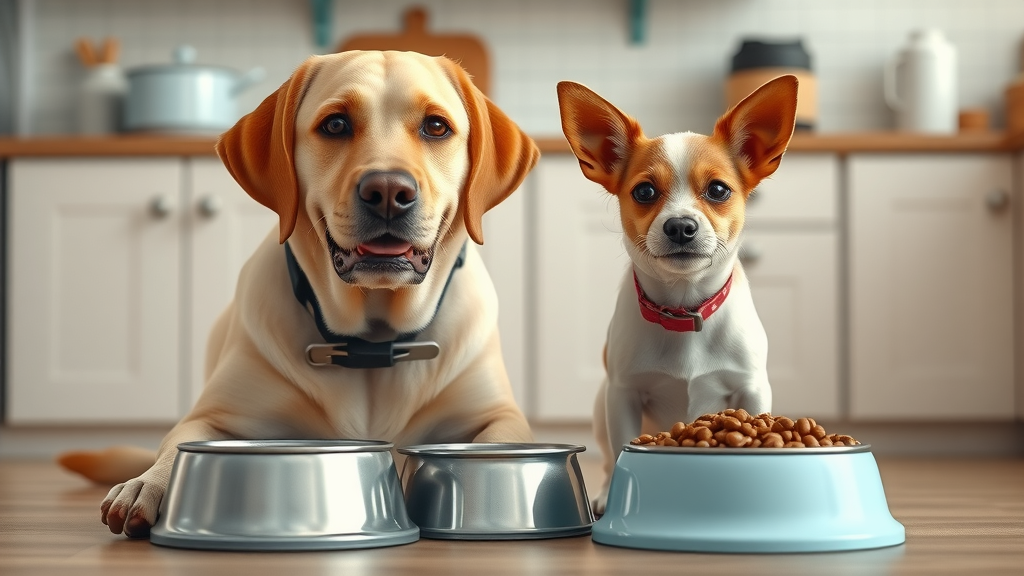
Curious About How Much Should I Feed My Dog Daily? Discover the Facts and Debunk the Myths
When asking how much should I feed my dog daily? , the answer isn’t always as simple as following a number on the back of a bag. Every dog is unique—what works for one golden retriever may be too much (or too little) for a tiny Yorkie. That’s why we need a more thoughtful, tailored approach to dog feeding , taking into account a blend of factors like age, size, dog food type, and daily activity level. By understanding these elements, you can feed your dog the right amount every day, avoid obesity, and prevent health issues associated with improper nutrition.
Practical examples highlight how diverse feeding needs can be. For instance, an active border collie may need double the calories of a senior pug, even if they weigh the same! Feeding charts and regular weight checks go a long way in fine-tuning your dog feeding routine. And if you’re ever unsure, a quick chat with your vet is always your safest bet. Ready to become an expert on what and how to feed your dog? Let’s dig in!
Why 'How Much Should I Feed My Dog Daily?' Isn't a One-Size-Fits-All Question
There’s no universal answer to how much should I feed my dog daily? . That’s because dogs vary wildly by breed, body size, growth stage, and activity level . Feeding your dog just like your neighbor does might not be the best idea, even if your pups look similar! Instead, you need to factor in nuances such as your pet’s age (puppy, adult, or senior dog), the ideal weight you’re aiming for, and whether your dog is a couch potato or a regular at the agility park.
The type of food you choose matters too—kibble, canned, or raw diets all offer different calorie densities, and your dog’s portion size should be adjusted accordingly. Plus, certain breeds are more prone to weight gain or sensitive stomachs, requiring a little extra planning. Finally, special circumstances like medical conditions, spaying or neutering, and food transitions mean every dog owner should periodically reassess their feeding chart for accuracy.
- Dog’s age: puppy, adult dog, senior dog
- Activity level
- Breed and ideal weight
- Type of dog food: dry, wet, raw
- Body condition and health status
How Much Should I Feed My Dog Daily: Identifying the Optimal Amount of Food
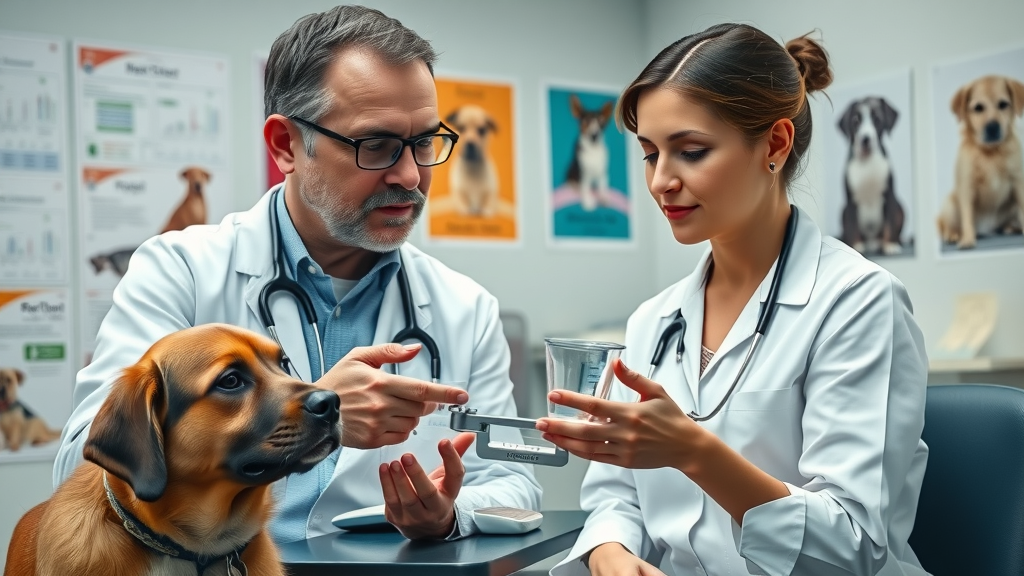
Understanding Portion Size and Amount of Food for Every Dog
Getting the portion size right is the key to a balanced diet for your pet. Each dog food label gives you a starting point, but these recommendations are averages —they’re not custom-tailored for your pup’s needs. Most feeding guides suggest giving 1% to 3% of your dog’s body weight in food each day, split into two meals for adults (and more frequent meals for puppies). Older dogs, and those with lower activity levels , might need a bit less to stave off unhealthy weight gain.
It’s also crucial to check for changes in body condition and adjust as you go along. If your dog is gaining or losing weight unexpectedly, tweak the amount of food up or down by about 10% and observe over the next couple of weeks. Keep these regular changes gradual—dramatic swings can upset your dog’s stomach and make health issues worse. Real-world tip: use a food scale and measuring cup for precise control over feeding amounts, rather than guestimating by eye.
Determining Your Dog’s Ideal Weight for Accurate Food Portions
Knowing your dog’s ideal weight is crucial for setting the right feeding amount . Many owners don’t realize their dog is overweight or underweight, and simply following the bag’s feeding guidelines without this knowledge can lead to trouble. Ask your veterinarian for a body condition score (BCS) check—this hands-on assessment helps determine if your dog is at, above, or below a healthy weight.
Once you know your dog’s healthy weight, you can reference the feeding chart for precise portions. For mixed breeds or rescues where “standard” weight isn’t obvious, your vet can estimate an ideal target. Make a habit of weighing your dog at home, if possible, or during routine checkups. Adjust food portions when you notice changes—an extra treat or two can add up fast!
Feeding Your Dog: How Dog Food Type Impacts Daily Portions
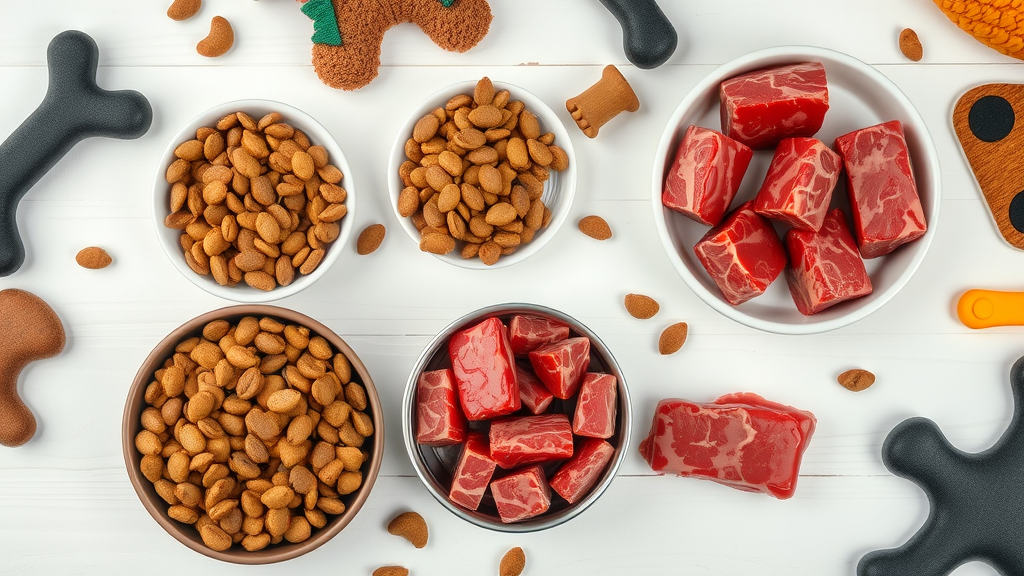
Choosing the Right Food to Feed My Dog: Wet, Dry, or Raw?
The type of dog food you select is just as vital as the amount. Dry dog food (kibble) is denser and often packs more calories per cup compared to canned wet food or homemade/raw meals. This means you may have to feed less kibble than canned food to meet your dog’s daily needs. On the other hand, wet and raw diets contain more moisture and sometimes fewer calories per serving, so portion sizes must be carefully measured. Switching between types? Be sure to adjust the amount of food so your dog isn’t underfed or overfed in the process.
Additionally, not all commercial foods are created equal—premium brands often provide more balanced nutrition, while some low-grade foods can leave your pup hungry or lead to excess weight. Always check the feeding chart on the packaging, and if in doubt, discuss options with your vet to ensure the food you choose supports your dog’s ideal weight and overall health.
Dog Feeding Chart: Practical Feeding Guide for Common Breeds (Table Included)
Every breed and size has unique dietary needs! Use this practical dog feeding chart as a starting point. Always fine-tune for your dog’s individual lifestyle and consult your vet for tailored advice.
| Breed/Size | Weight Range | Daily Food (Dry Kibble) | Meals Per Day |
|---|---|---|---|
| Small (e.g., Chihuahua, Toy Poodle) | 5 - 15 lbs | 0.5 - 1.25 cups | 2 (Adult), 3-4 (Puppy) |
| Medium (e.g., Beagle, Cocker Spaniel) | 16 - 35 lbs | 1.25 - 2.25 cups | 2 (Adult), 3-4 (Puppy) |
| Large (e.g., Labrador, Boxer) | 36 - 65 lbs | 2.25 - 3 cups | 2 (Adult), 3-4 (Puppy) |
| Giant (e.g., Great Dane, Mastiff) | 66+ lbs | 3+ cups | 2 (Adult), 3-4 (Puppy) |
Note: Adjust amounts depending on activity level , body condition, and food calorie density.
Dog Feeding Chart by Weight and Age
As your puppy grows into an adult dog and eventually a senior dog , feeding charts change too. Puppies need more frequent meals packed with nutrients for growth, while older dogs benefit from fewer calories and joint-supporting ingredients. Here’s a quick reference by weight and age:
| Dog Weight | Puppy (Cups/Day) | Adult Dog (Cups/Day) | Senior Dog (Cups/Day) |
|---|---|---|---|
| 10 lbs | 1 - 1.5 | 0.75 - 1 | 0.75 |
| 30 lbs | 2 - 2.5 | 1.5 - 2 | 1.25 - 1.5 |
| 60 lbs | 3 - 4 | 2.5 - 3 | 2 - 2.5 |
| 90 lbs | 4.5 - 6 | 3.5 - 4 | 2.75 - 3.5 |
These are ballpark ranges—use your dog’s body condition and lifestyle as your guide, and check with your vet for specific adjustments.
Dog Feeding Guide: Adapting Portions for Life Stages — Puppy, Adult Dog, and Senior Dog

Feeding Your Puppy: Special Considerations and Charts
Puppies are little energy factories—they burn calories fast and need special nutrition to build strong bones, brains, and immune systems. Their feeding guide is very different from that of an adult dog . Puppies up to six months should eat 3-4 times a day, and only puppy formulas provide the right blend of protein, fat, and vitamins. It’s easy to overfeed a chubby pup or not give enough to keep up with a rapidly growing body. Always measure their food, watch their weight, and use the chart above for recommended portion sizes. Tip: if your puppy finishes a meal and still seems ravenous, it could be growing fast—recheck the recommended portion size with your vet often!
Keep in mind, large or giant breeds require special feeding schedules to avoid rapid growth that can harm their joints. Feed them specially formulated large-breed puppy food and stick to moderate, chart-based increases until they reach adulthood. No matter the breed, water should always be fresh and available, and treats kept at 5-10% of daily calories maximum.
How Much Should I Feed My Adult Dog Daily to Maintain Ideal Weight?
The needs of an adult dog are all about maintaining ideal weight and meeting their unique activity level . If your dog is active, athletic, or spends hours playing outdoors daily, higher calorie intake might be needed—always under the guidance of your vet. Most healthy adult dogs do well with two scheduled meals daily, following the guidelines laid out in our dog feeding chart .
However, changes in the environment, routine, or health status—like a new baby in the house, extra walks, or injury—mean it’s wise to reassess food to feed your dog. Regular weight checks and body condition scoring help you see if your feeding strategy needs a tweak. Remember, healthy weight isn’t just about looks; it’s about your dog feeling its best and avoiding chronic health problems down the road.
Feeding Chart for Senior Dogs: What Changes as Dogs Age?
Your senior dog (usually age 7+) will thrive with special attention to portion size and nutrition. Aging brings different energy needs—older dogs slow down, often burn fewer calories, and may also face dental or medical issues influencing dog feeding choices. It’s time to ask your vet about transitioning to senior-specific formulas that offer joint support, antioxidants, and easy-to-digest ingredients.
Don’t automatically reduce their portions; first check their body condition and adjust based on weight gain or loss. Some senior dogs may benefit from smaller, more frequent meals to help with digestion and energy management. If your feeding chart seems off once your dog reaches its golden years, consult your vet—they’ll guide you on adjusting not just portion size but also the type of food for changing needs.
How Activity Level, Feeding Schedule, and Body Condition Shape Feeding Decisions
Is an Active Dog the Same as a Senior Dog? Adjusting Food for Activity Level

An energetic young dog is nothing like a mellow senior dog when it comes to feeding amount . Dogs who hike, jog, or play sports burn many more calories, requiring more protein and healthy fats than a relaxed pet who enjoys cuddles on the couch. Consistently monitor your dog’s body condition —visible ribs or excess fat are cues for more or less food, not just activity level alone.
Routine also matters. When your dog’s activity suddenly slows—due to age, injury, or weather—scale back the daily ration to match, and ramp up again when back in action. Puppies, too, fluctuate from wild growth spurts to calmer days; feed small amounts more frequently, and adjust as your vet recommends. Misjudging activity levels is one of the most common sources of unhealthy weight gain or loss in dogs.
Setting a Dog Feeding Schedule: Number of Meals and Feeding Timing
Establishing a consistent feeding schedule is vital for digestion and routine. Most adult dogs do best on two meals a day—split evenly in the morning and evening—while puppies and small breeds often prefer three or four smaller meals. Senior dogs with medical issues or low energy might thrive with three gentle meals to avoid hunger spikes or upset stomachs. Changing meal timing or frequency? Gradually adapt and watch for signs of discomfort or hunger between meals.
Always serve meals at roughly the same times each day to prevent anxious behaviors, digestive problems, or food guarding. Sticking to a schedule also helps you spot sudden decreases in appetite—a sign that a health check with your veterinarian may be needed.
Body Condition Scoring: Why Visual Checks Matter More Than Cups
Body condition scoring is hands-down the best way to judge if your feeding routine is working. Instead of strictly following the cup measurement on the bag, use your eyes and hands: can you feel your dog’s ribs without pressing hard? Is there an obvious waist when you look from above? These visual cues tell you if you’re on track or if it’s time for an adjustment.
Graphs and scales are great, but body condition trumps “standard” food portions every time. Many owners find that even precise measuring doesn’t prevent their dog from becoming overweight due to low activity or metabolism changes. If you need help with visual scoring, ask your vet to demonstrate. They’ll show you what an ideal, slightly under, or slightly overweight dog really looks like.
"The right portion size isn't just about a number—it’s about energy, vitality, and your dog’s unique lifestyle."
Common Mistakes When Deciding How Much Should I Feed My Dog Daily
- Guessing instead of using a feeding chart
- Feeding table scraps
- Ignoring activity level changes
- Forgetting to transition food types correctly
- Not monitoring weight and body condition regularly
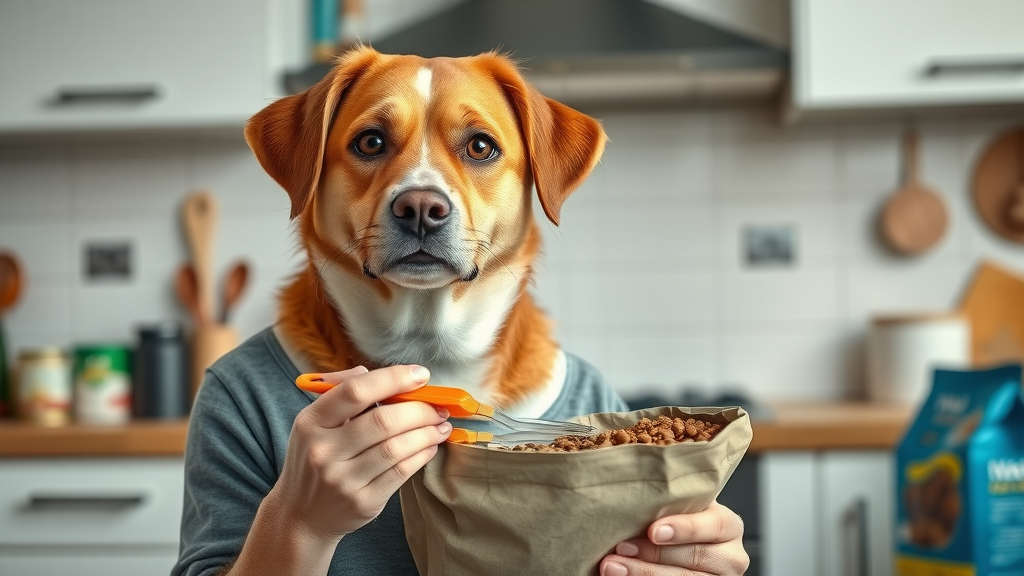
Popular Dog Feeding Myths: Separating Fact from Fiction
- Dogs only need one meal a day
- All dog foods are created equal
- You can eyeball the perfect portion size
- Puppies and senior dogs should eat the same amount as adults
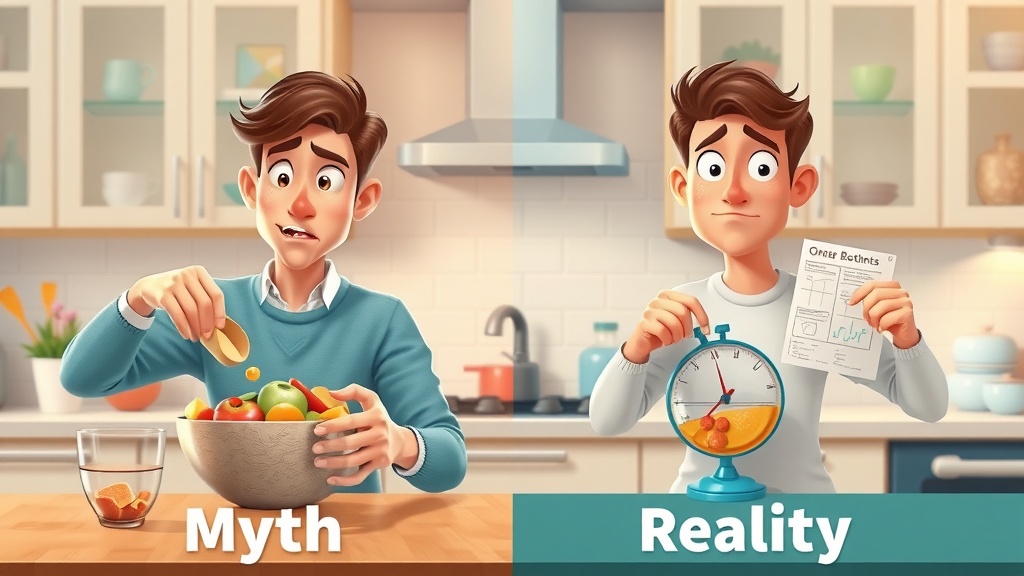
People Also Ask: Finding the Right Feeding Approach for Your Best Friend
How much food should I feed my dog per day?
The ideal daily food amount depends on several factors: your dog’s weight, age, breed, activity level , and the type of dog food you use. Most guidelines recommend feeding 1-3% of your dog’s body weight per day, divided into two meals. It’s always safest to consult your veterinarian and start with chart-based recommendations, keeping a close eye on your dog’s body condition for adjustments.
What is the 80/20 rule for dog food?
The 80/20 rule refers to feeding a raw or home-cooked diet with 80% animal protein and 20% vegetables/fruits. This does not apply to commercial diets like kibble or canned pet food—always follow packaging instructions or veterinary advice for these diets to ensure balanced nutrition.
Is 1 cup of food enough for a dog a day?
For many small breeds , one cup daily might be enough. Medium and large breeds usually require more—sometimes two or three cups, or even more for puppies and very active dogs. Always refer to a dog feeding chart and use your dog’s current weight, ideal weight , breed type, and activity level to find the right amount.
Is 2 meals a day enough for a dog?
Most adult dogs do best with two meals per day. Puppies need more frequent meals to fuel rapid growth, while senior dogs may benefit from smaller, gentler meals depending on their health. Stick to a routine to keep your dog’s digestive system strong and healthy.
Practical Feeding Tips: Making Sure You Always Feed Your Dog the Right Way
- Measure food precisely each meal
- Use a consistent feeding schedule
- Monitor and adjust portions as needed
- Consult a vet when changing diets
- Track weight and health milestones
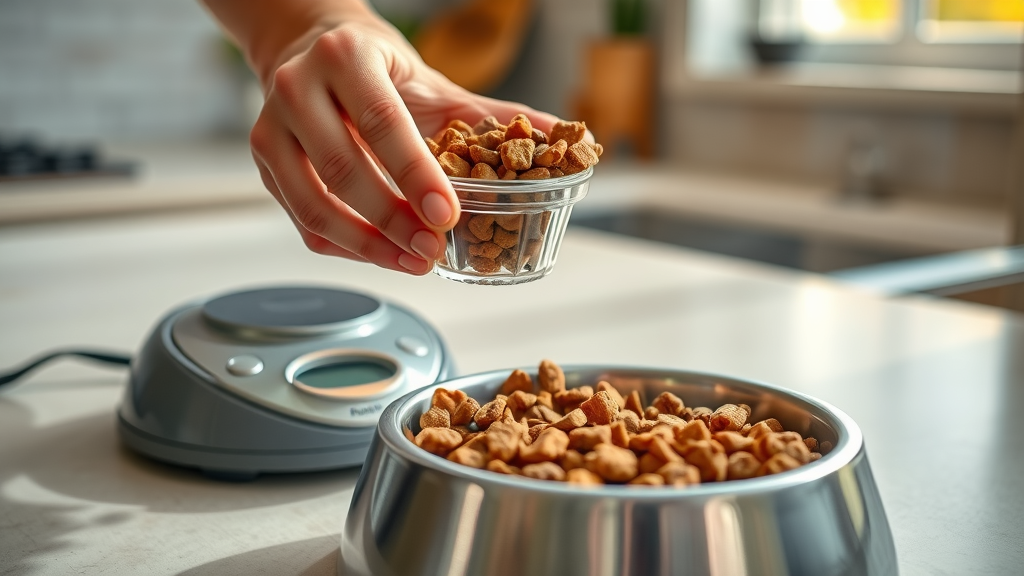
Frequently Asked Questions About How Much Should I Feed My Dog Daily?
- How does spaying/neutering affect feeding needs? Hormonal changes can reduce energy needs; you may need to lower your dog’s daily food amount by about 10-15% after spaying or neutering.
- Should I feed my dog before or after exercise? Feed at least one hour before or after exercise to avoid digestive issues, especially for large or deep-chested breeds prone to bloat.
- What treats count toward daily calories? All treats—even healthy ones—should count toward your dog’s daily total. Keep them to less than 10% of your pet’s full calorie intake.
- When should I change my dog’s food portion or type? Adjust food portions when you notice weight changes, shifting activity levels , or after a vet’s advice. Transition food types gradually to avoid tummy upsets, ideally over 5-7 days.
Want to Feed Your Dog Right Every Day? Join Our Growing Pack
Our pack is growing — and you’re invited. 🐶🐱 Subscribe now to get exclusive stories, pet wellness tips, and product deals straight to your inbox.

Getting Feeding Right: Key Insights for All Dog Owners
- Use your dog’s weight, age, breed, and lifestyle as a feeding guide
- Rely on accurate feeding charts for daily food recommendations
- Adjust portions for health status and consult your veterinarian regularly
- Creating healthy habits ensures your dog’s long and happy life
Check out our visual step-by-step video for fast, friendly dog feeding tips, including portion sizing and body condition checks!
Watch our expert guide on easy feeding, how to read your dog’s signals, and adjusting the amount you feed your dog with confidence.
Expert Veterinary Talk: Q&A on How Much Should I Feed My Dog Daily?
Get best practices, pro nutrition tips, and real answers from veterinary professionals—because your furry friend deserves the healthiest meal every single day.
Ready to master your dog’s daily feeding? Measure meals, monitor health, and ask your vet for advice as your dog changes through life stages!
Determining the appropriate daily food intake for your dog is essential for their health and well-being. The American Kennel Club’s article, How Much Should I Feed My Dog? , provides comprehensive guidance on factors influencing feeding amounts, including size, age, activity level, and health status. Additionally, Purina’s resource, Dog Feeding Chart: How Much Should I Feed My Dog? , offers detailed feeding charts and emphasizes the importance of adjusting portions based on your dog’s individual needs. If you’re serious about ensuring your dog’s optimal nutrition, these resources will provide valuable insights and practical advice.
 Add Row
Add Row  Add
Add 




Write A Comment